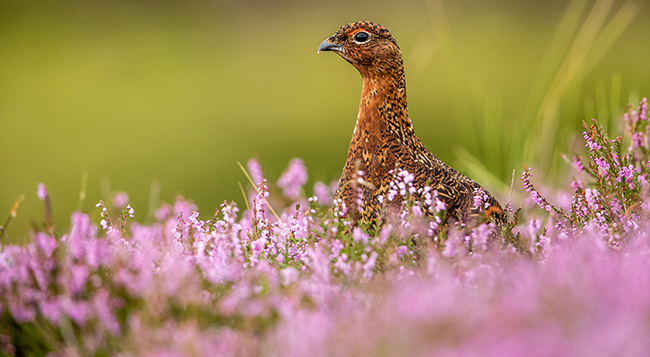Scotland’s economy and local communities will have missed out on over £10m of economic benefits due to a weather-ravaged grouse shooting season this year, a new survey has revealed.
The 2018 season officially closed last week but Scotland’s Regional Moorland Groups, who conducted the survey, say many estates stopped earlier due to a lack of surplus grouse for UK and overseas sportsmen and women to shoot.
Now the costs of the poor season have been estimated, with between 10 and 15 million pounds expected to have been wiped off the usual economic spin-off of £32 million.
A confidential poll of 50 estates across Scotland, conducted by Scotland’s 7 regional moorland groups, found that over £7.8 million was lost to the economy from pre-booked dates that had to be cancelled.
Given the survey sample size, that figure is only a snapshot of what has been haemorrhaged country-wide.
In the sample, the equivalent of 16 000 seasonal shoot day shifts for beaters, cooks, clearers and housekeepers were alsocancelled, amounting to well over £1.2m of cash that would have been circulating downstream through remote communities during a normal season.
Scottish Government receipts will also be down between £2m and £3m on a good grouse year, through missing VAT and tax receipts on cancelled bookings, seasonal shifts and taxable profits.
The survey could not gather data from businesses reliant onthe visitor income, such as airports, accommodation, food and drink businesses and equipment suppliers.
However, if this was accounted for, it is believed that between £10m and £15m would be shaved off the £32m normally enjoyed in better years.
A spokesperson for Scotland’s Regional Moorland Groups said: ‘There is no direct subsidy for grouse shooting in Scotland so estates will have to take the losses from this year on the chin and hope for better in 2019. Mixed estates will have to try to absorb the impacts from other arms of their operations.

‘Grouse are a totally wild bird and the breeding season was badly hit by the snows of the ‘Beast from the East’, followed by a long, dry summer which meant that females were not in favourable condition when it came to breeding time. Estates only shoot when there is a harvestable surplus and it is sustainable to do so.
‘Some decided to scale back their programmes. Some decided to cancel their dates completely.’
Areas particularly badly hit were Grampian, Tayside, Speyside and Angus although the Angus Glens still saw a reasonable shoot programme, given the challenges.
The untold impacts will be on the shops and diverse trades that benefit directly from visitor income in the shoulder season.
A survey ahead of the 2017 grouse season showed that £23 million of trade to local businesses was generated from 45 sporting estates in 2015-2016.
Much of that sum will already have been invested again, ahead of the 2018 shoot season.
However, income will be badly down for the estates themselves, which could affect their spending power in 2019.
It is understood full-time gamekeeper employment will not be affected, although casual workers have lost out big across the country.
The spokesman added: ‘A lot of families, students and pension-age people enjoy getting out during the grouse season to socialise, work their dogs and earn additional income. It is important for family budgets, health, community cohesion and combating loneliness in remote areas. Losing 16 000 shifts is tough.’
Ahead of the season, The Scottish Gamekeepers Association highlighted the millions of pounds of un-costed conservation benefits delivered by skilled land managers, even in years of falling income.
The 2014 report by PACEC: The Value of Shooting, placed the value of conservation on all shoots across Britain at 3.9 million work days or the equivalent of 16 000 full-time conservation jobs (1).
TAGS

